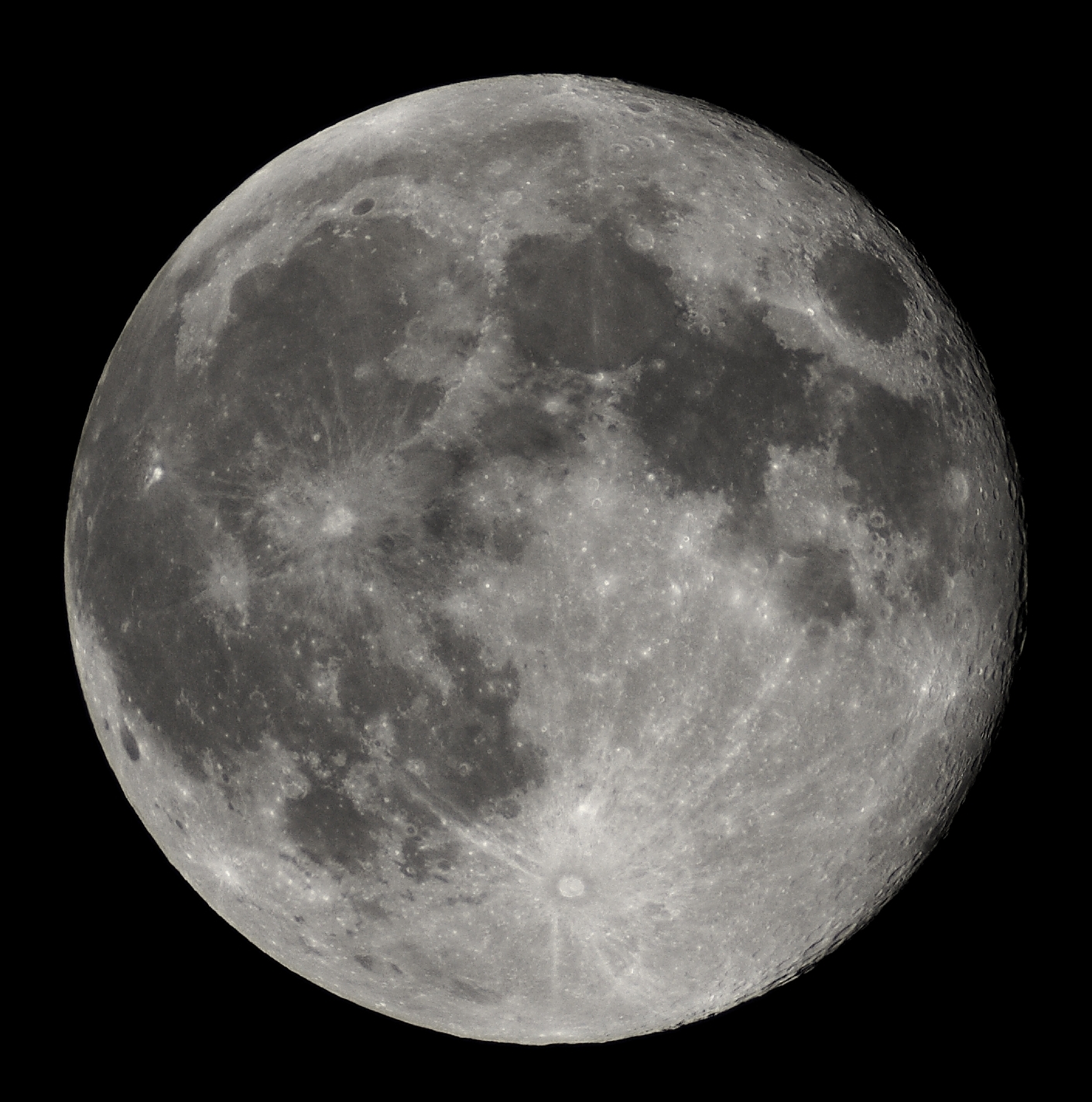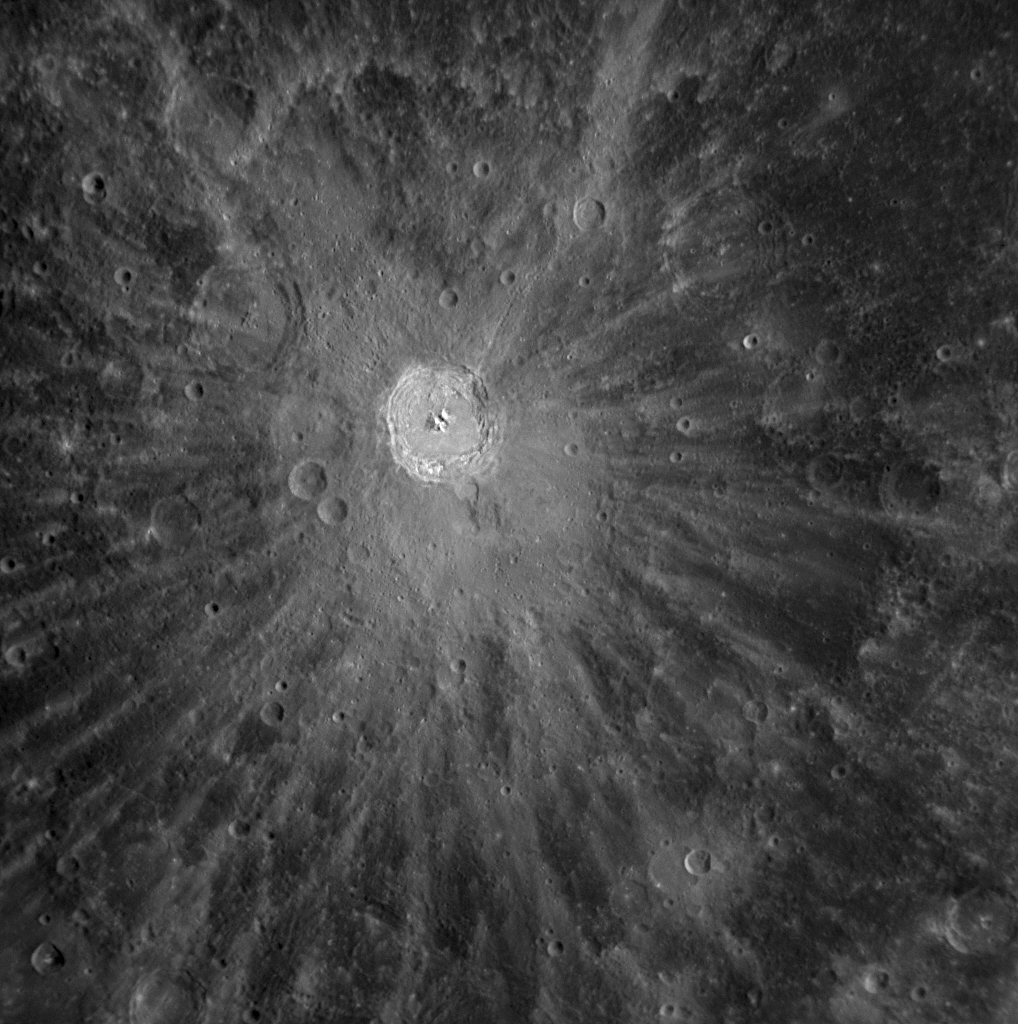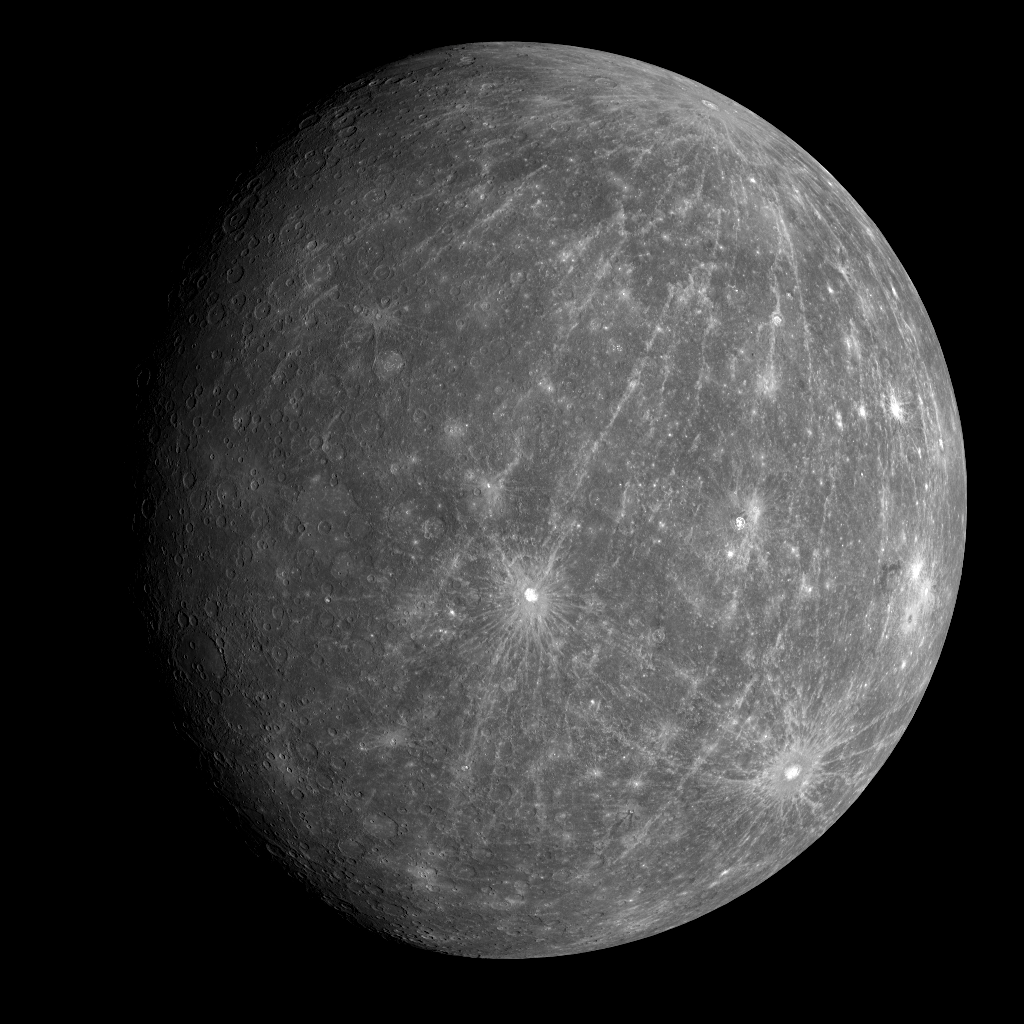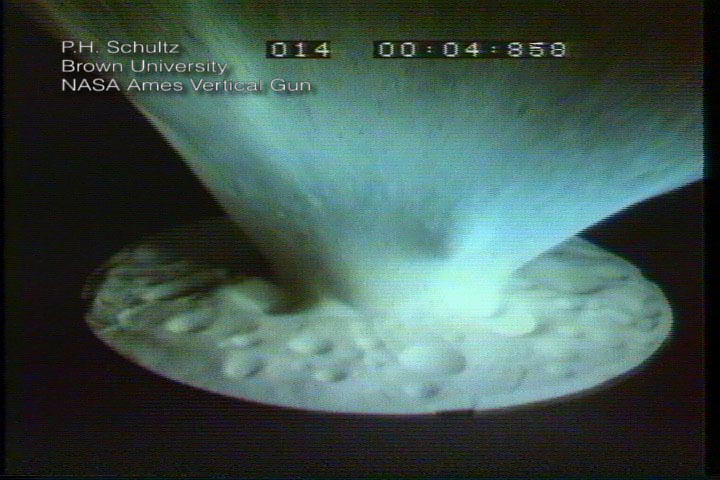Planetary Sciences 206
Homework #4
Solution
1. In this picture of the full Moon one can see several "rayed
craters", most notably the bright crater Tycho at the bottom of the
picture. Rays from Tycho extend for many hundreds of
kilometers
outward
from its center.
 Image by Luc
Viatour from
Wikipedia
Image by Luc
Viatour from
Wikipedia
Go to the Messenger
website
and find at least two examples of rayed
cratera on Mercury. Print out images of these rayed Mercury
craters along
with their identifications, and turn these in with this homework
assignment.
There
are many spectacular examples of rayed craters on the Messenger
site. Here is crater Kuiper, first observed and named by the
Mariner 10 team shortly after G. P. Kuiper's death:

This
crater is 62 km in diameter and its rays extend for hundreds of
kilometers in all directions. Note the central peak.
Here
is a whole-disk image of Mercury from Messenger, showing
intersecting
ray systems:

The
bright crater just south of the center of the image is Kuiper.
2. Go to
http://en.wikipedia.org/wiki/Impact_crater
and click on the impact movie under "Crater formation." The
movie shows a high-speed digital sequence of a vertical impact by
a
copper
sphere traveling at 4.5 km/sec into porous pumice (density of
about
1g/cc). Ejecta are launched out of the target and only
gravity limits how far they can travel beyond the rim on ballistic
trajectories.
 image by P.H. Schultz, Brown
University and J.P. Wiens
image by P.H. Schultz, Brown
University and J.P. Wiens
Based on such impact experiments and the discussion given in lecture
about orbital and suborbital (ICBM) trajectories, discuss how rayed
craters are formed.
As
we can see from these experiments, a high-velocity impact launches
a
conical sheet of material moving outward from the impact
site. If
the impacted surface is not perfectly smooth but has
irregularities,
these irregularities may cause the ejected sheet to not be a
perfect
cone, but have "rays" (corresponding to low spots in the impact
site). Depending on the energy of the impact, some of the
sheet
material can travel for very long distances, and if the material
is
ejected at close to orbital velocity, it can even travel a
trajectory to very distant points on the planet:

 Image by Luc
Viatour from
Wikipedia
Image by Luc
Viatour from
Wikipedia

 image by P.H. Schultz, Brown
University and J.P. Wiens
image by P.H. Schultz, Brown
University and J.P. Wiens